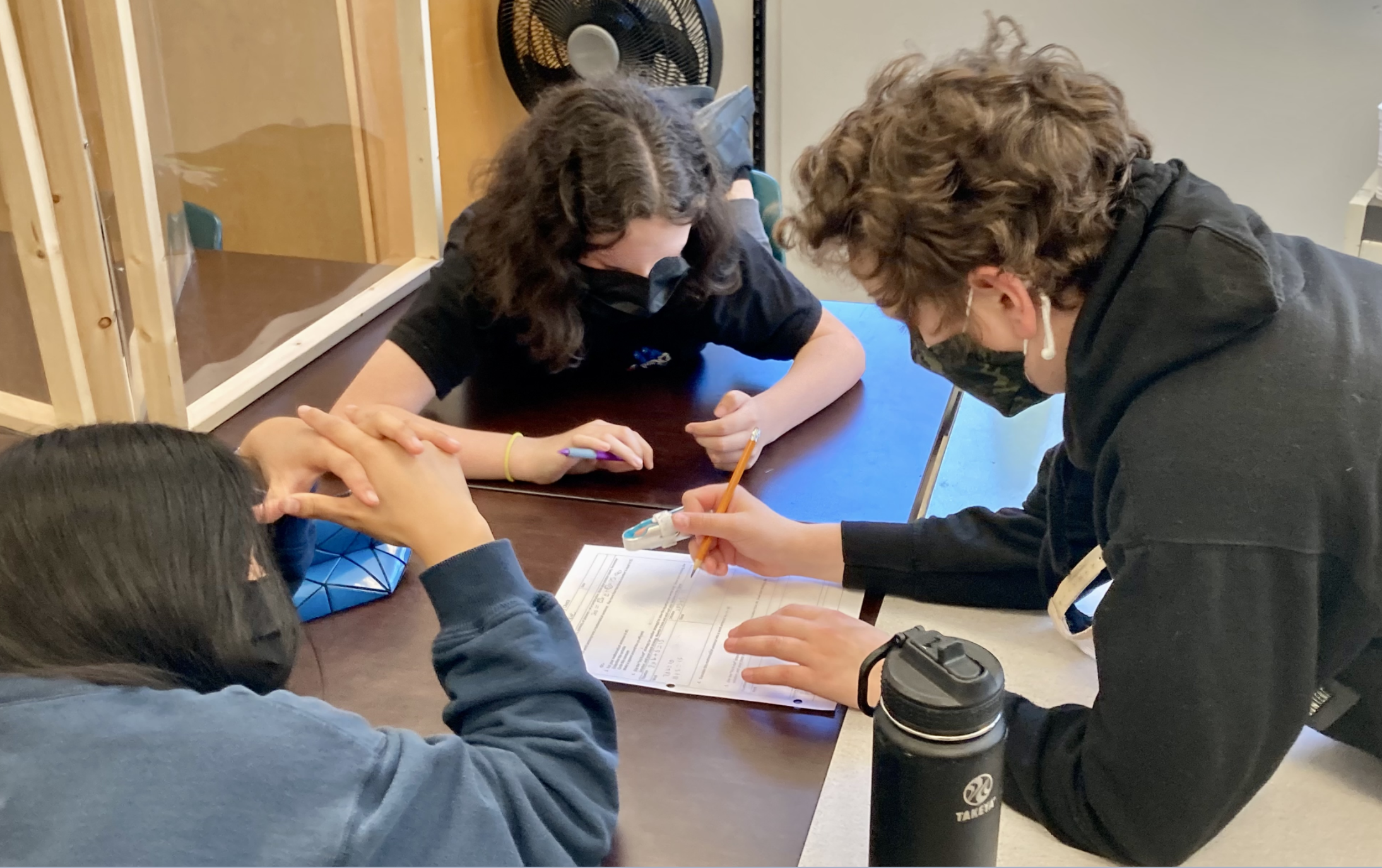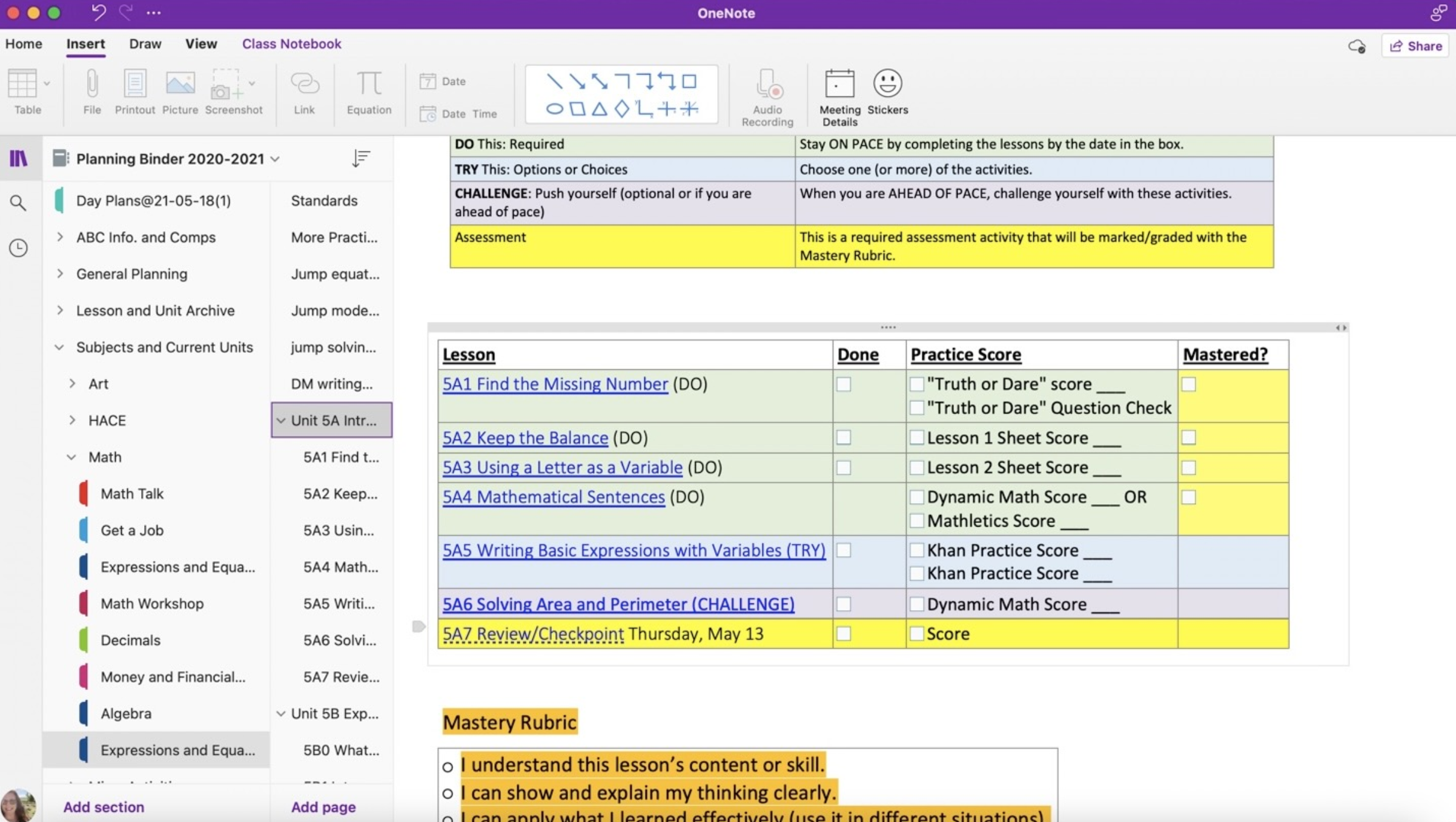Global Impacts: Coquitlam, Canada
Amy Azaroff teaches science to grades 6 and 7 at Hillcrest Middle School in Coquitlam, Canada. She sat down with the Modern Classrooms Project to share her experience with blended, self-paced, mastery-based instruction.
Q: How did you discover the Modern Classrooms Project (MCP)?
Like a lot of teachers, I was looking for engaging lessons and ways to support students through remote and blended learning when the Pandemic started in 2020. My district was remote until June, when we started inviting students back into the building 2 days per week, on alternating days. In-person attendance was optional for students, and we were teaching hybrid classes from the building. I had been teaching Art until that time, and my team and I were shifted into a supportive Learning Assistance role – tasked with collaborating with classroom teachers to keep students connected and engaged in learning. I started the free course right away.
Q: What first stood out to you / attracted you to MCP?
I was immediately excited about the model. It reminded me of my very early years of teaching in a small private elementary school where we used self-pacing and mastery-based grading for some of our subjects and skills. There was no blended learning, as this was in the mid-90’s before anyone had computers or devices (I did have a listening centre with tape players with multiple headphone jacks). Students used contracts (on paper) to track their work, and they accessed the assignments and materials in file folders on the wall and in hanging files. I loved it. I’ve used contracts over the years for individual students and projects, so when I discovered MCP, it was a natural fit for me. I was also getting ready to teach a mixed grade 6/7 class at a new school that was about to go 1:1. What a wonderful way for me to manage teaching the two grade level requirements, support students where they were – and where they needed to go – and make use of the available technology.
Q: As you started implementing the model, what impact did you notice it having on your own practice as a teacher?
I started using the model in Math at the beginning of the 2020-2021 school year. I loved the ability to circulate and connect with students while they were practicing skills at their appropriate level and pace. Making instructional videos forced me way out of my comfort zone, but it was a great way to challenge myself – and to model a growth mindset! The other aspect of the model that made the most impact on my teaching practice is revision and reassessment. We already used a mastery-based grading scale in my district, so that part wasn’t new to me or the students. The way that the model incorporates revision and reassessment REALLY impacted the way I dealt with assessment. Now it’s possible for me to have assessment "conferences" with my students to reflect on their learning and target my support to the areas that are challenging for them. I am even able to provide alternative assessments (verbal, performance, etc.) for students, since the rest of the class is engaged, working through their own trackers.
Although I didn’t use the model in all subjects last year, I did start to incorporate revision and reassessment into the rest of my subjects. It makes my teaching feel much more purposeful and effective - and it feels more possible to address the wide variety of needs in my class. It also means that assessment isn’t the end of learning. I was very fortunate to win a scholarship for the mentorship program after completing one of the MCP surveys. The expanded course materials, detailed assignments, and access to my wonderful mentor were incredible ways for me to deepen my understanding and revise and improve my implementation of the model.
Q: As you started implementing the model, what impact did you notice it having on your students?
We all learned a lot from our first MCP unit. Many students were still developing executive functioning skills and had difficulty adapting to the self-pacing aspects of the model. Most of my class acclimated quickly to the routines and expectations of the model and were really enjoying the freedom, collaboration, and personalization by the second unit, but a couple of students required a set pace and due dates all year. Although some of the students found the revision process frustrating at first, they all grew to appreciate the opportunity to revise, get support, try again, and improve – especially for assessments and bigger projects. This was huge for my students with testing anxiety and those who did not see themselves as “good at Math”. They started to shift their thinking and make the connection between hard work, revision, progress, and success. It was a big confidence boost. My very social class loved being able to work together, help one another, and collaborate in a new way – while learning the difference between “working together” and “talking while doing your work”. Having the opportunity to be a “lesson helper” once a student had mastered a lesson was another great asset of the model. I saw noticeable growth in their self-reliance and confidence – some of them really started to enjoy Math in a new way.
Q: As you started implementing the model, what impact did you notice it having on your peers and/or wider school community?
Unfortunately, I didn’t have any colleagues in my school who were familiar with the model – my administrator at the time had never heard of it either. We had just adopted 1:1. We were one of the only places in the Northern Hemisphere where school started fully in person, full-time at the start of the 2020-2021 school year. There were huge changes to our school structure, teacher course loads, schedules, and classrooms. I was new to the school, so I didn’t know anyone. Everyone was overwhelmed. Nobody wanted to try anything “new” – we were in crisis mode. Our new principal, who started in February, is familiar with the model and is very supportive.
Although I didn’t get much feedback from families, I did have one student who shared that his mom thought that I was “being picky” by requiring students to revise their work and assessments. I invited her discuss any concerns she had with me, but she didn’t take me up on it. This year, I’m going to send a link to my Unit 0 videos for families to watch, and I will provide a family information 1-pager to introduce the model.
Q: Is there anything else you would like to share about MCP’s impact?
I’m really looking forward to embarking on my second year of MCP. I learned so much from my first year of implementation. I look forward to using some great tips from the Summer Institute sessions and so many excellent ideas from the podcast and the Facebook groups. Before MCP, I NEVER would have started a Facebook group about using technology in education! I’m planning to implement the model fully in Science, and I’m going to use a blended learning, mastery-based station-rotation model in Math. I’m incredibly grateful to have found MCP.





